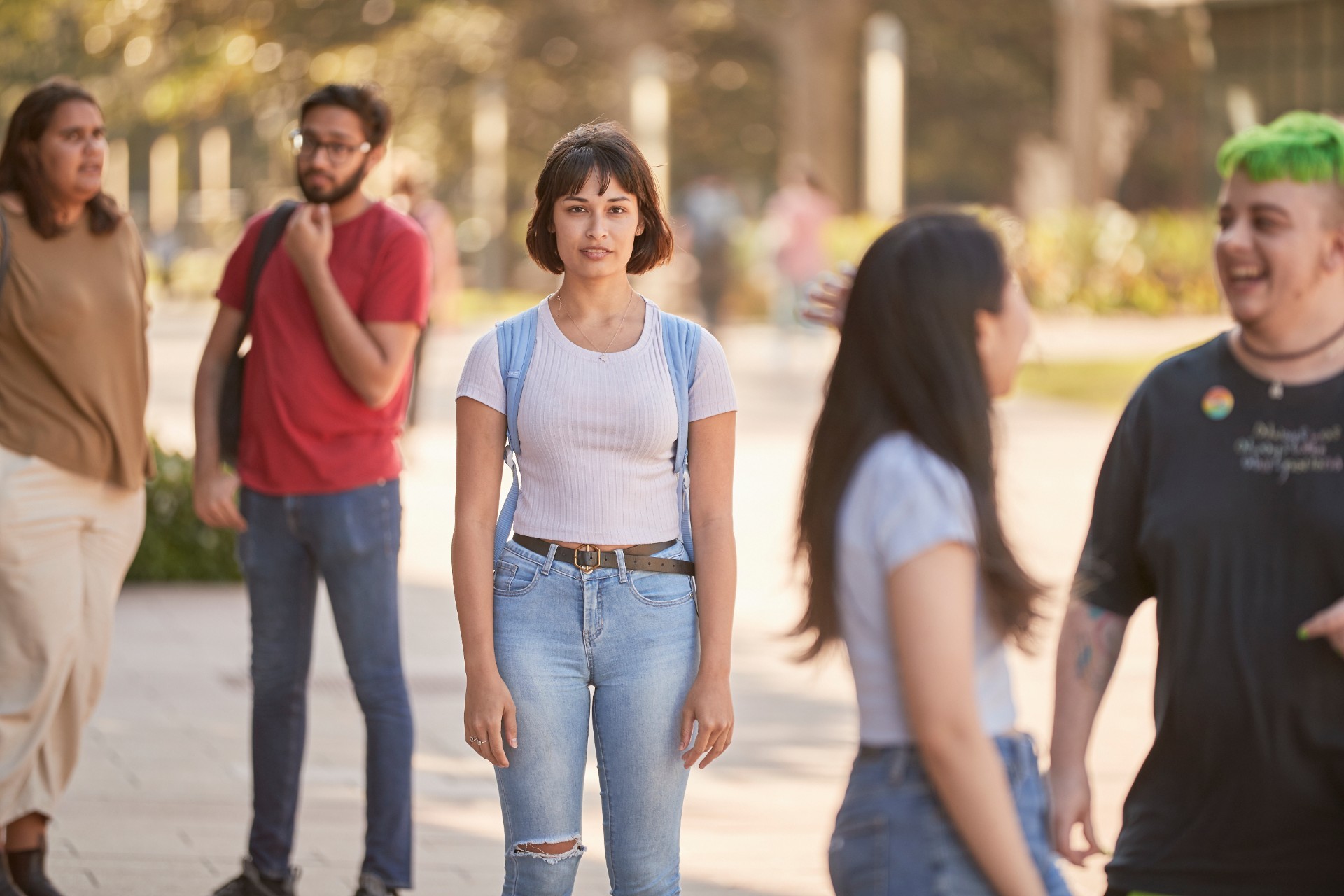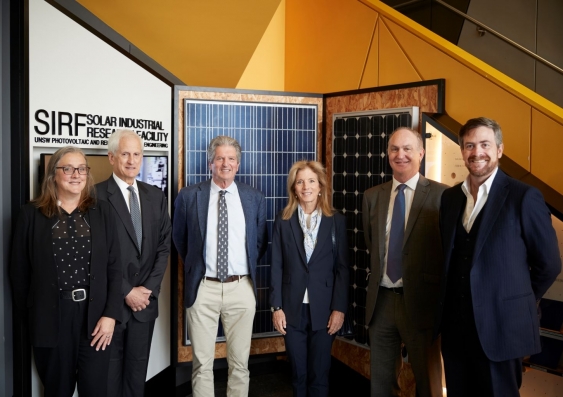UNSW to play major role in strengthening NSW’s higher education strategy
2025-04-01T10:30:00+11:00

UNSW students Harsheen Purewal, Rifah Tamanna, Maixence Williams and Jennifer Amponsah attended the NSW Higher Education Strategy launch and met the NSW Minister for Skills, TAFE and Tertiary Education.
Photo: UNSW Sydney
Steve Whan, NSW Minister for Skills, TAFE and Tertiary Education, visited UNSW’s Kensington campus to launch the state’s higher education strategy.
UNSW Sydney has taken centre stage in the state’s vision for a more connected, accessible, and workforce-driven higher education system.
Steve Whan, NSW Minister for Skills, TAFE and Tertiary Education, toured the University’s Solar Industrial Research Facility (SIRF) before presenting the strategy to NSW Vice-Chancellors, Department of Education representatives, and university students and staff on Tuesday, 25 March.
The strategy focuses on strengthening pathways between vocational and higher education, addressing critical workforce needs, and expanding support systems to improve access and success for disadvantaged students.
“The higher education strategy, ‘Public Partnerships for Public Benefit’, is a really solid framework for the way that the relationship between the NSW government and our universities in NSW goes forward,” Mr Whan said.
“We want to ensure that our educational offerings across the state are linked as best we can and [in the] most smooth and cohesive way possible, so that people in NSW have access to the sort of education which can make their lives better and help them to be productive and really happy parts of our society as we move forward.”
The NSW higher education strategy emphasises collaboration between the state government, industry and universities. The strategy aims to support current and future workforce needs in NSW, enable lifelong learning pathways, improve equity outcomes in higher education and enable integration across sectors for public good. It aligns with the state's skills plan, targeting high-need areas and ensuring access for disadvantaged students.
UNSW Vice-Chancellor and President Professor Attila Brungs said the Minister’s visit was an excellent opportunity to highlight UNSW’s expertise in developing cutting-edge research, its broader contributions to the state’s higher education sector and its partnerships for societal impact.
“UNSW is committed to supporting NSW’s higher education priorities through our teaching, research and industry partnerships,” Prof. Brungs said.
“We are dedicated to identifying further opportunities to improve student access and success, ensuring that all learners – regardless of background – can thrive in higher education.
“Collaboration with education providers is also key to ensuring that UNSW’s programs align with the evolving needs of the modern workforce. UNSW remains a driving force in strengthening NSW’s higher education landscape, keeping the state at the forefront of knowledge and innovation.”
The impact of higher education
While at UNSW, Mr Whan met with several students who spoke of their studies and experiences at the University.
Rifah Tamanna, a 20-year-old second-year Bachelor of Engineering (honours) student, said she had always been passionate about working with communities.
“When I discovered that UNSW offered a Civil Engineering degree with an optional minor in Humanitarian Engineering, I was ecstatic! Finding a course so closely aligned with your future aspirations is rare, and I wouldn’t have wanted it any other way,” Ms Tamanna said.
“The professional development resources provided by UNSW Employability and the soft skills gained through volunteering in student societies have been invaluable. These experiences help you become a well-rounded individual which helps you stand out from other candidates and facilitates a smoother transition from university to the professional world.”
Harsheen Purewal, a 20-year-old Bachelor of Arts / Commerce student, said UNSW society and extracurricular culture drew her to the University.
“Choosing UNSW was a big step as very few students in my school selected this university. Whilst the start of university was tricky navigating a completely different timetable and social dynamic to my friends, I found the best way to make the most of first year was getting involved!” Ms Purewal said.
“Since first year, there was always a clear correlation between the courses I studied and their relevance in the workforce. With so many networking, mentoring and career opportunities, UNSW students are well-equipped to enter the workforce and make a meaningful contribution.”
We are dedicated to identifying further opportunities to improve student access and success, ensuring that all learners – regardless of background – can thrive in higher education.
The emphasis on preparing students for real-world challenges is mirrored in UNSW’s research and technological advancements, which provide hands-on training opportunities for students.
The School of Photovoltaic & Renewable Energy Engineering’s Solar Industrial Research Facility (SIRF) is a state-of-the-art pilot line manufacturing facility. It bridges the gap between laboratory research and large-scale industrial production of silicon solar cell technologies. The facility also plays a vital role in training the next generation of photovoltaics experts, ensuring Australia remains at the forefront of solar innovation.
Media enquiries
For enquiries about this story please contact Yolande Hutchinson:
Tel: 0420 845 023
Email: y.hutchinson@unsw.edu.au





